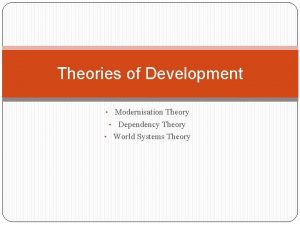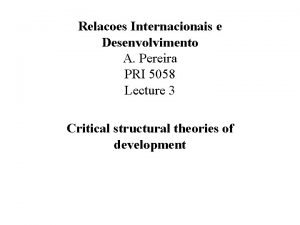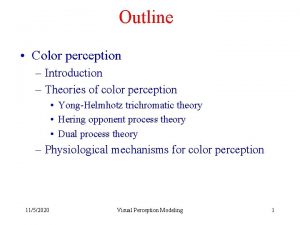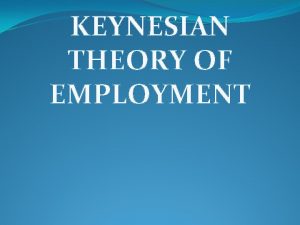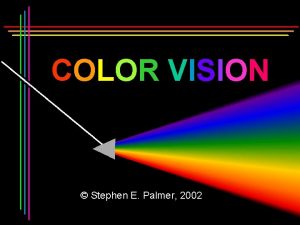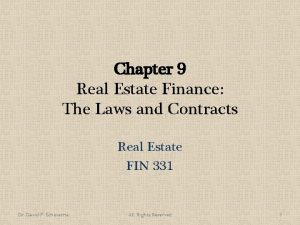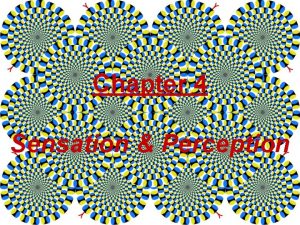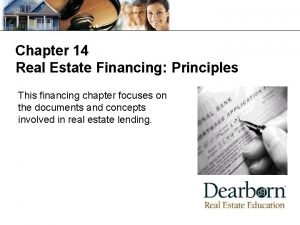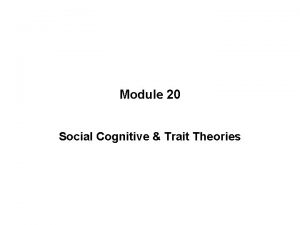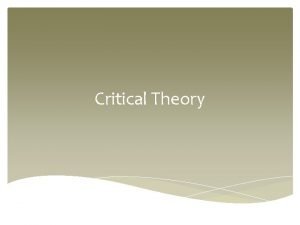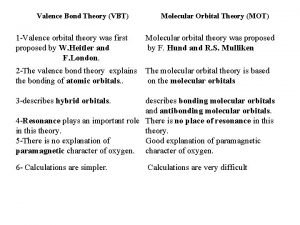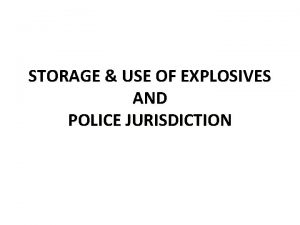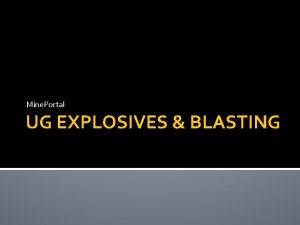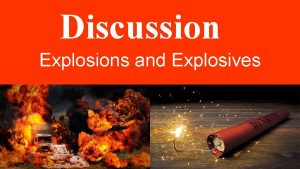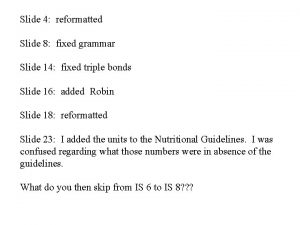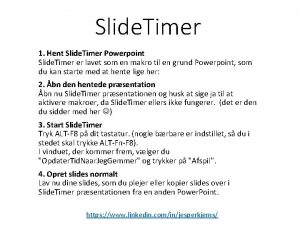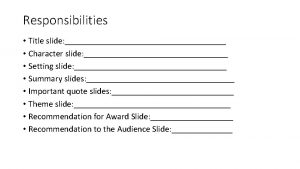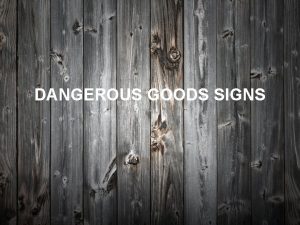Theory of Explosives C 3 Slide 1 Explosives



























- Slides: 27

Theory of Explosives C 3 Slide 1

“Explosives”: A Definition An explosive is a substance that when initiated, exerts a sudden and intense pressure on its surroundings, by the rapid formation of large quantities of gas. C 3 Slide 2

Products of an Explosion § Noise § Heat/Flash § Blast/Shockwave • And, depending on if there is another material involved: Projectiles/Fragments C 3 Slide 3

Chemical Composition of an Explosive § Explosives need two fundamental components: • Fuel = something that releases energy • Oxidiser = something to sustain the release of energy C 3 Slide 4

Sensitivity v Sensitiveness § Sensitivity: How responsive an explosive material is to an INTENTIONAL stimulus § Sensitiveness: How responsive an explosive material is to an UNINTENTIONAL stimulus A firing pin hitting a percussion cap on a cartridge case for rifle ammunition A fork lift truck fork piercing an artillery shell cartridge case C 3 Slide 5

Effects of Containing Explosives § Containing an explosive creates a more significant explosion (greater power = pressure) § Within the container: pressure increases, so temperature increases, which results in an increase in pressure = a reciprocal effect § This lasts milliseconds but is still significant § ‘Contained’ explosion will usually be significantly more powerful than an uncontained one C 3 Slide 6

Types of Explosive Low Explosive High Explosive An explosion is a chemical reaction between appropriate materials which results in the sudden release of heat, noise, and pressure The difference is simply how that chemical reaction occurs C 3 Slide 7

Types of Explosive Low Explosives High Explosives Deflagrate Detonate (they burn, although very rapidly) (this is a change to the molecular structure and happens instantly, rather than ‘burning’) C 3 Slide 8

Low Explosives § “Deflagration” – very rapid burning § The burning takes place along a surface The rate of deflagration is determined by : • Surface area • Material density • The surrounding pressure Gunpowder is a low explosive material A type of ammunition containing a low explosive is burning fuze C 3 Slide 9

High Explosives § A supersonic shockwave which travels through the material § The “Velocity of Detonation” (VOD) Detonation rate is not determined by material density, surface area or outside pressure Detonators contain a pea-sized amount of high explosive. This metal ammo box had a single detonator inside it. C 3 Slide 10

High Explosive Brisance § High Explosives produce an effect upon adjacent metal § “Brisance” - shatters the metal § In grenades, artillery shells and mortar bombs this is used to produce fragmentation § This does not happen with low explosives C 3 Slide 11

The Explosive Train A method of initiating an explosive “main charge” using a sequential assembly of explosive components C 3 Slide 12

The Explosive Train – An Analogy Think of how you start a barbeque: You don’t hold a match to the charcoal …you use a match to a firelighter… …and the firelighter to the charcoal This is a more efficient transfer of energy from a small volatile and short lived device, to something that holds and ‘boosts’ the energy of the match, into something that is difficult to light but, once lit, delivers the desired result C 3 Slide 13

The Explosive Train The explosive train is the same: It takes a small, highly sensitive explosive (so sensitive you wouldn’t want a large quantity or it as this would be potentially highly risky)… …to transmit its energy into a booster that magnifies this power… …which in turn is sufficient to initiate a main charge C 3 Slide 14

The Explosive Train Detonator Detonating cord High explosive main charge, eg Semtex C 3 Slide 15

Examples of Initiators For high explosives: a detonator For low explosives: a match CO Slide 16

Examples of Boosters For high explosives: detonating cord For low explosives: burning fuze C 3 Slide 17

Examples of Main Charges For high explosives: PE 4 (Plastic Explosive Number 4) For low explosives: Gunpowder (eg in noise simulators) C 3 Slide 18

Blast and Shock Blast wave: an area of pressure expanding supersonically outward from an explosive core Explosive material Area of high pressure expanding outward CO 3 Slide 19

Blast and Shock In our context, it is an area of highly increased air pressure which moves outward Explosive material Area of high pressure expanding outward C 3 Slide 20

Shock Front § The “shock front” (or shock wave) is the leading edge of the area of expanding pressure § It is made up of rapidly expanding gases § Behind the shock front is an area of negative pressure § As blast effect emanates out from an explosive, it has a shock front of highly increased pressure followed by a wave of negative pressure C 3 Slide 21

The Pressure-Time Curve Pressure (P) Pmax Pambient Pmin Arrival Time Positive Phase Duration Negative Phase Duration Time C 3 Slide 22

Impulse § The area under the curve shows the “impulse” § The impulse largely determines the extent of damage caused by the blast § A bigger/longer impulse (ie area under the graph) will cause more damage § For example, ‘Volumetric’ (or fuel/air) explosives prolong the explosion and development of blast, which increases/prolongs the impulse, to create more damage to structures. C 3 Slide 24

The Effects of Blast § High pressure ‘shock front’ § Area of low ‘wind’ behind it Moves faster than the speed of sound Lasts only a few milliseconds at each point along its path § Blast interacts with physical material § Projected by blast at high velocity (and energy) § Projectiles/fragmentation Broken glass is a significant cause of injuries in bomb attacks in urban areas C 3 Slide 25

The Effects of Blast Lagos, Nigeria, 2002 C 3 Slide 26

MORE DAMAGE Impulse – sensitive region § “P-I Curves” § Graph showing impulse against pressure § Curve shows susceptibility of a given structure to pressure and impulse Peak Pressure Impulse Curves Curve of constant damage Dy na Se mic Re nsiti ally gio ve – n LESS DAMAGE Pressure – sensitive region Impulse C 3 Slide 27

Questions? C 3 Slide 28
 Heel toe polka steps
Heel toe polka steps Factoring polynomials
Factoring polynomials Theory x and theory y
Theory x and theory y Continental drift vs plate tectonics theory
Continental drift vs plate tectonics theory Dependency theory
Dependency theory Sensation
Sensation Importance of dependency theory
Importance of dependency theory Plate tectonics vs continental drift
Plate tectonics vs continental drift Opponent process theory vs trichromatic theory
Opponent process theory vs trichromatic theory Difference between classical theory and neoclassical theory
Difference between classical theory and neoclassical theory Theory x and theory y of motivation
Theory x and theory y of motivation Semantic satiation
Semantic satiation Integrity vs despair
Integrity vs despair Introduction to adulthood
Introduction to adulthood Classical theory vs keynesian theory
Classical theory vs keynesian theory Opponent process theory vs trichromatic theory
Opponent process theory vs trichromatic theory Plate theory chromatography
Plate theory chromatography Lien theory vs title theory
Lien theory vs title theory Trichromatic theory vs opponent-process theory
Trichromatic theory vs opponent-process theory Lien theory vs title theory
Lien theory vs title theory Continuity theory vs activity theory
Continuity theory vs activity theory Three ranges of the as curve
Three ranges of the as curve Y management
Y management Social cognitive personality
Social cognitive personality Neoclassical growth theory vs. endogenous growth theory
Neoclassical growth theory vs. endogenous growth theory Game theory and graph theory
Game theory and graph theory Critical theory conflict theory
Critical theory conflict theory Valence bond vs molecular orbital theory
Valence bond vs molecular orbital theory




